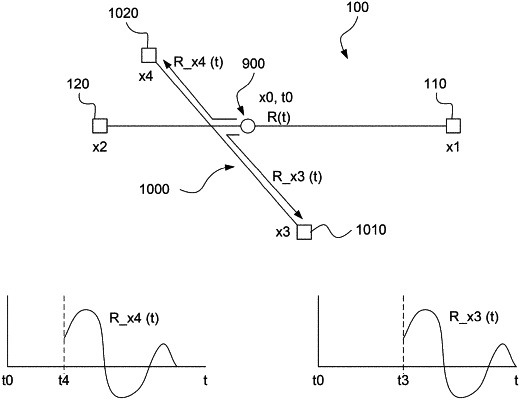| CPC G01V 1/008 (2013.01) [G01H 9/004 (2013.01); G01V 1/282 (2013.01); G01V 1/307 (2013.01)] | 20 Claims |

|
1. A method of evaluating undersea seismic activity based on data received from a plurality of stations located along a network of underwater optical cables having a fixed speed of propagation at which optical signals propagate through the network, the method comprising:
receiving, by one or more processors, from a first station of the plurality of stations, a first optical signal indicating a seismic wavefront reaching the first station at a first time, the first station located at a first location;
receiving, by the one or more processors, from a second station of the plurality of stations, a second optical signal indicating the seismic wavefront reaching the second station at a second time, the second station located at a second location; and
estimating, by the one or more processors, one or both of a time of origin or a location of origin of the seismic wavefront using a machine learning model based on the first optical signal, the second optical signal, and the fixed speed of propagation, wherein the machine learning model is trained on prior examples of seismic activity.
|